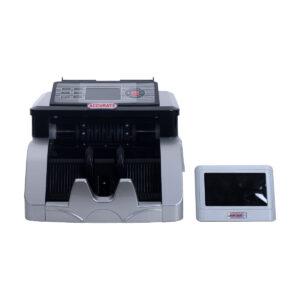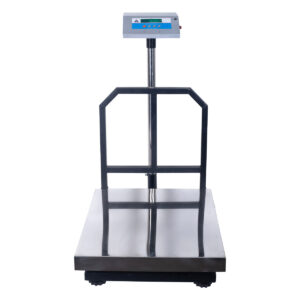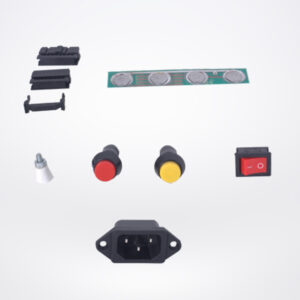The International Prototype of the Kilogram is an object whose mass was used to define the kilogram from
1889, when it replaced the Kilogramme des Archives, until 2019, when it was replaced by a new definition of
the kilogram based entirely on physical constants. During that time, the IPK and its duplicates were used to
calibrate all other kilogram mass standards on Earth.
A Kibble balance, which is used to measure weight via electric current and voltage. With this instrument,
the measurement of mass is no longer dependent on a defined mass standard and is instead dependent on
natural physical constants.A diagram of the second-generation tabletop
Kibble balance being built at NIST. In this
version, movement is restricted to two
dimensions using flexures, metal strips that
only bend on one axis. The mass pan holds the
physical object being weighed. An
electromagnetic coil sits on each side of the
device. Magnets provide a magnetic field
through which the electromagnetic coils
move. An optical encoder, which detects light
and converts it into electrical signals,
measures the movement of the coil. The
whole device is roughly the size of a ream of
printer paper.The circuit diagram of the Kibble balance in force mode (top) and
velocity mode (bottom). A digital voltmeter (DVM) is used to measure
the small difference between the programmable Josephson voltage
standard (PJVS) and the voltage across the resistor (top) or the induced
voltage across the coil (bottom).
Archives
Recent Posts
December 13, 2024
August 30, 2024
August 28, 2024
Products
-
 AMV 33 Value Counting 3D Scanner
₹5,000.00
AMV 33 Value Counting 3D Scanner
₹5,000.00
-
 SS Stone Weight
₹400.00
SS Stone Weight
₹400.00
-
 ATB / ATC - E Series Without Pole
₹3,000.00
ATB / ATC - E Series Without Pole
₹3,000.00
-
 SS PAN - Metal Indicator
₹3,000.00
SS PAN - Metal Indicator
₹3,000.00
-
 Elcom Switches
₹3,000.00
Elcom Switches
₹3,000.00
Newsletter
Subscribe to our mailing list to get the new updates!



